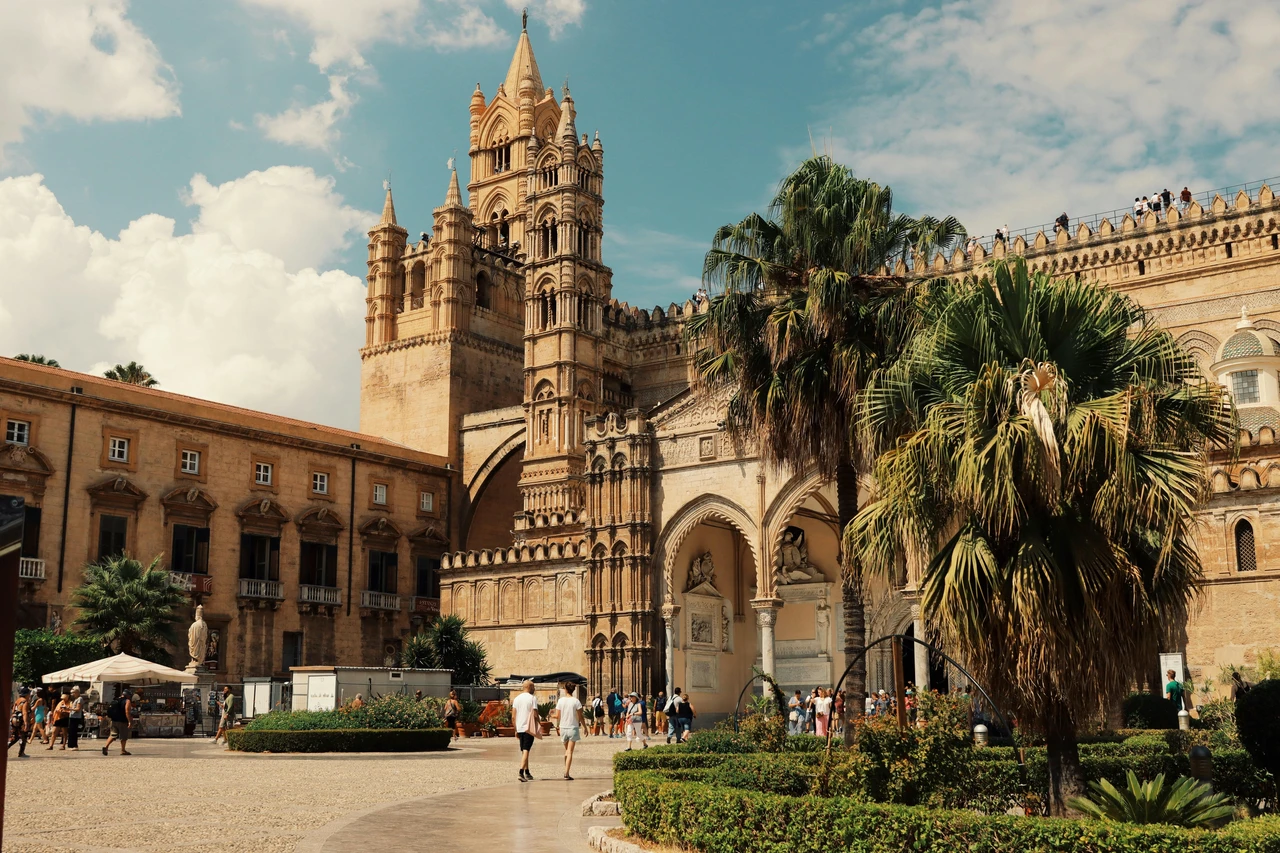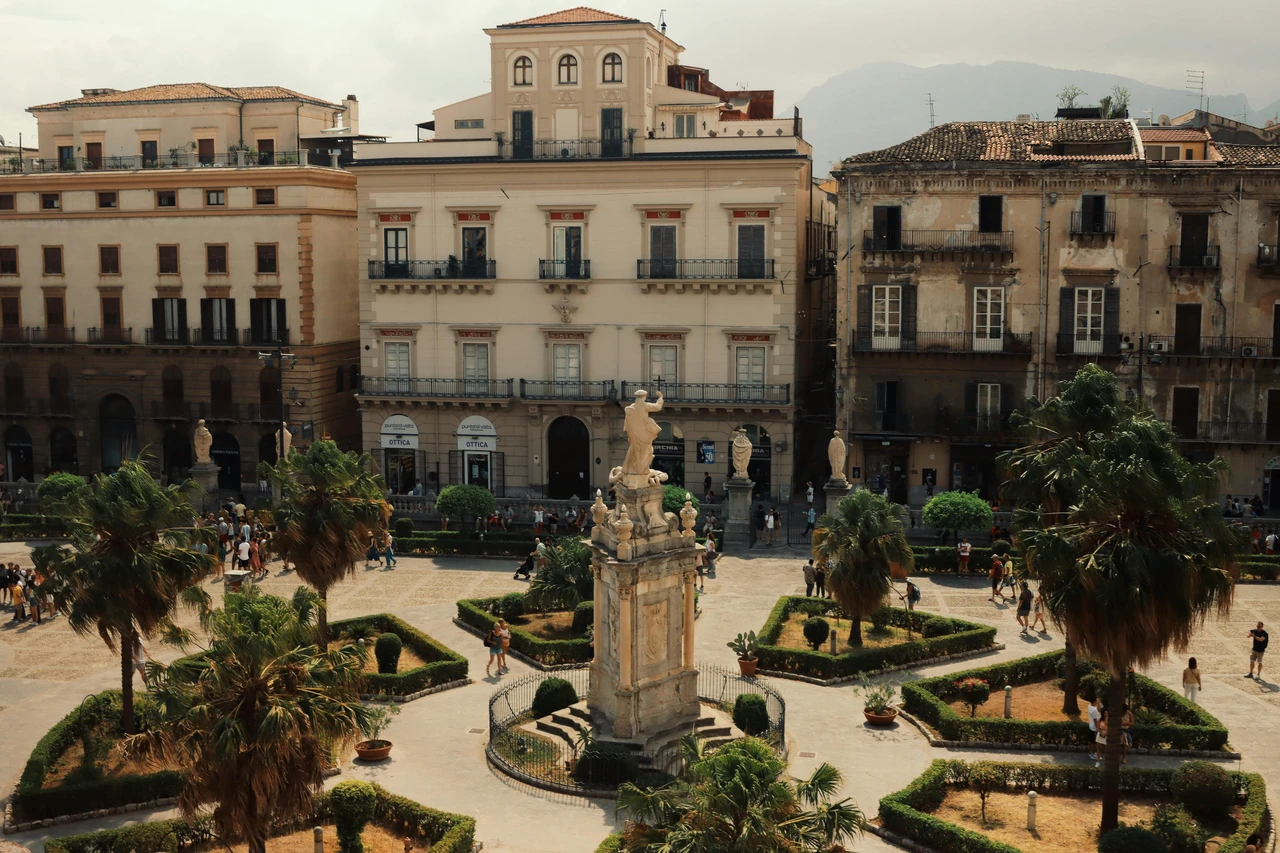Destinations
What to See in Palermo This Summer: 11 Top Places plus Travel Tips
Discover how to reach Palermo by ferry with GNV and what to see this summer: routes, onboard Wi-Fi, and 11 must-see attractions.
17 June 2025
Reaching Palermo by sea with GNV
Set off for Palermo with GNV’s comfortable overnight crossings:
- Naples – Palermo
- Genoa – Palermo
On GNV ships, you’ll find comfortable cabins, restaurants, entertainment, and Seafy Wi-Fi (available on GNV Spirit and Allegra), perfect for planning your trip or sharing your journey.
🌴 What to see in Palermo in summer: 11 must-see places
🏰 1. Palazzo dei Normanni & Cappella Palatina
The Royal Palace, a symbol of Sicilian history, houses the stunning Palatine Chapel, decorated with golden Byzantine mosaics and an Islamic muqarnas wooden ceiling.
📍 Location: Piazza Indipendenza, 10 min walk from Quattro Canti. 🎟️ Tip: book your visit in advance using onboard Wi-Fi.
⛪ 2. Palermo Cathedral

A UNESCO World Heritage Site combining Norman, Gothic, Baroque, and Neoclassical styles. Don’t miss the rooftop panoramic views over the city.
📍 Corso Vittorio Emanuele, 500 m from Quattro Canti. 🕒 Visit in the morning to avoid the heat.
🎭 3. Teatro Massimo
Italy’s largest opera house and the third largest in Europe. Explore its grand interiors and check out the summer programme of concerts and events.
📍 Piazza Verdi, 5 min walk from Quattro Canti.
🏛️ 4. Quattro Canti (Piazza Vigliena)
This iconic Baroque intersection is known as the “Theatre of the Sun”, with each facade representing seasons, Spanish kings, and Palermo’s patron saints.
📍 Where Corso Vittorio Emanuele meets Via Maqueda.
💦 5. Fontana Pretoria (“Fountain of Shame”)

One of Italy’s most beautiful fountains, featuring 48 allegorical statues. 📍 Piazza Pretoria, behind Quattro Canti.
🍽️ 6. Historic markets & street food (Ballarò, Vucciria, Capo)
Experience Palermo’s authentic life:
✅ Ballarò: biggest market, near the central station ✅ Vucciria: best for nightlife and street food ✅ Capo: morning market with fresh fish and local delicacies
Don’t leave without tasting an arancina, Palermo’s queen of street food!
🏖️ 7. Mondello Beach
White sand, turquoise water, and beach clubs just 10 km from the city centre.
🚍 How to get there: bus 806 (30 min, €1.50-2) or by car/scooter (15-20 min).
⛰️ 8. Monte Pellegrino & Sanctuary of Santa Rosalia
Called by Goethe “the most beautiful promontory in the world”. 📍 Reachable by bus 812 or by car. Sunset views are unforgettable.
🏰 9. Monreale Cathedral
A Norman masterpiece with over 6,000 m² of golden Byzantine mosaics.
🚍 How to get there: bus 389 from Piazza Indipendenza (~30-40 min).
⛪ 10. Martorana Church (Santa Maria dell’Ammiraglio)
Arab-Norman church with 12th-century golden mosaics.
📍 Piazza Bellini, near Quattro Canti.
🌅 11. La Cala & Foro Italico (Palermo seafront)
Enjoy an evening stroll by the sea among boats, green lawns, and cycle paths. 📍 10 min walk from the city centre.
💡 Final tips
Before docking, connect to Seafy Wi-Fi onboard GNV Spirit and Allegra to:
✅ Download offline maps ✅ Check transport timetables ✅ Book tours and tickets
✨ Have a great trip and welcome to Palermo – your Sicilian adventure begins the moment you connect to Wi-Fi onboard and see Monte Pellegrino appear on the horizon!
Sources:
Il mosaico di Ruggero II della Martorana di Palermo: un’immagine che dice di più di mille parole
Passeggiando per Palermo (e pensando alla Sicilia)
Piazza Politeama, Palermo to Lido di Mondello – one way to travel
Palermo, la Fontana Pretoria (o della Vergogna) nasconde un segreto
Arancino o arancina? Hanno tutti ragione | La Cucina Italiana
Monte Pellegrino and its sanctuary | Wonderful Italy
Side Trips in Mondello – Frommers
Nuova luce sui mosaici di Monreale – Vatican News
Palermo to Monreale by Bus | How to Visit Monreale Without a Tour
Palermo → Santuario di Santa Rosalia: precios y horarios – Rome2Rio
FORO ITALICO: Tutto quello che c'è da sapere (AGGIORNATO 2025)